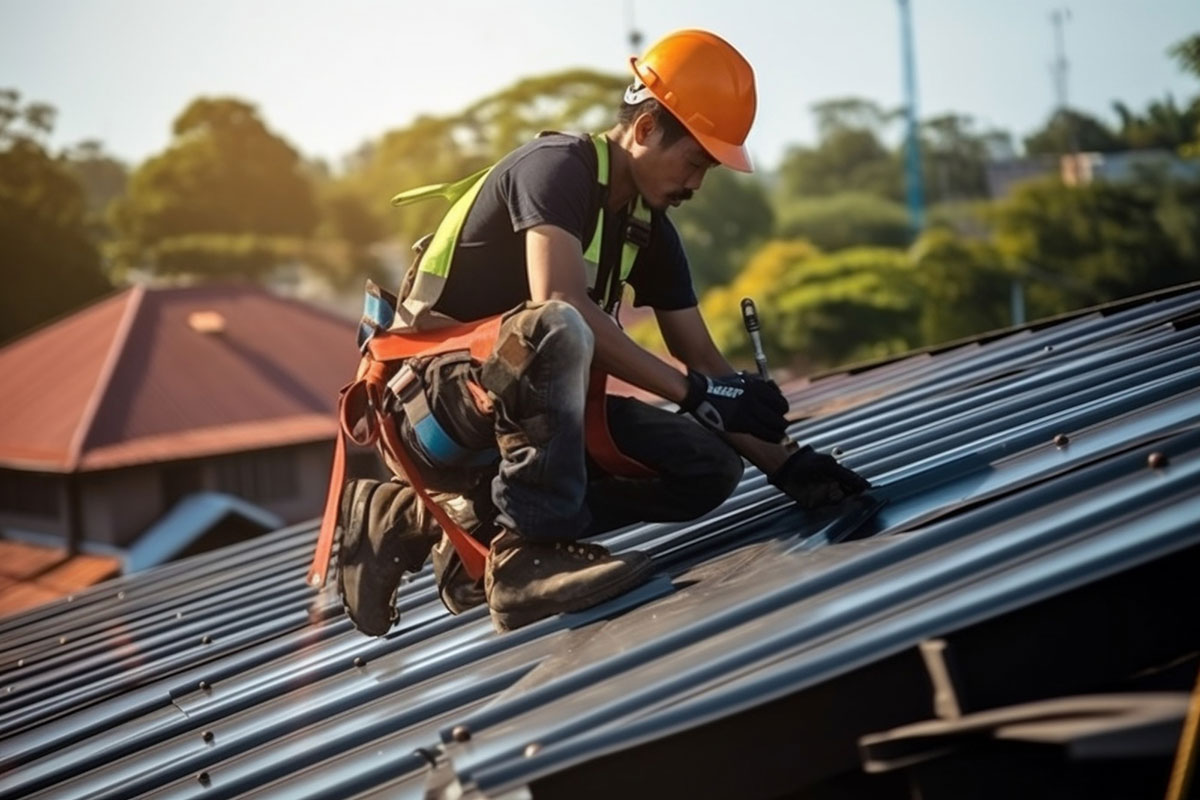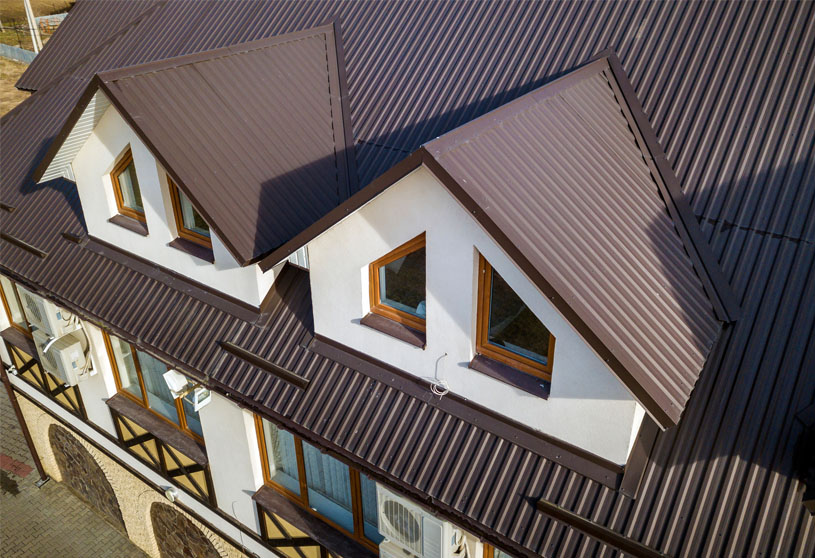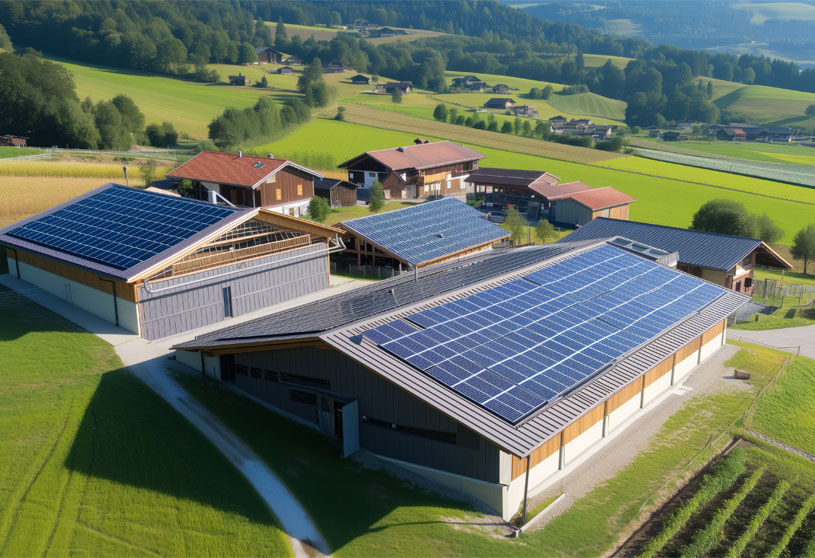Are you an architect, designer, or building owner looking to maximize energy efficiency? It’s time to consider metal roofing as a key player in your next project.
In this post, the following points will explore the significant role metal roofing plays in creating energy-efficient building designs and why it’s a smart choice for the environmentally conscious.
The Science Behind Metal Roofing’s Energy Efficiency
Metal roofing system offers unique properties that contribute to its energy efficiency. It reflects a large portion of the sun’s rays, reducing heat absorption and keeping your building cooler in summer. This reflective property can be enhanced with special coatings that further minimize heat gain.
Additionally, it’s said that metal roofs emit heat more efficiently than other materials. This means that any heat absorbed by the roof is quickly released, preventing it from transferring into the building and reducing cooling demands. The combination of high solar reflectance and thermal emittance creates a cooling effect, which can help mitigate urban heat islands and improve overall energy efficiency.
Real-World Benefits You Can Expect From Using Metal Roofing
By incorporating metal roofing into your building design, you can expect significant energy savings.
Studies have shown that metal roofs can reduce cooling costs unlike conventional asphalt roofing. This translates to lower utility bills and a more comfortable indoor environment for occupants.
Moreover, metal roofs are more durable and long-lasting. With proper installation and maintenance, at-home metal roofs can last decades, providing long-term energy efficiency benefits and reducing the need for frequent replacements. This longevity also contributes to sustainability by minimizing the environmental impact associated with roof replacements and waste generation.
Versatility In Design And Application
One of the greatest advantages of metal roofing is its versatility. Metal roofs come in many colors, finishes, and styles, allowing you to customize your building’s aesthetic while prioritizing energy efficiency.
Eyeing a modern feel or a more non-modern appearance, there’s a metal roof out there for you. For instance, you can choose from a variety of profiles, such as standing seam, corrugated, or shingle-style, to match the architectural style of your building.
In addition, metal roofing is suitable for various building types and climates. From residential homes to commercial buildings, from hot and sunny regions to colder environments, metal roofing can adapt to different needs and provide energy efficiency benefits tailored to your location. In hot climates, metal roofing’s reflective properties help reduce cooling loads, while in colder areas, it can assist in preventing ice dams and snow buildup, enhancing the overall energy performance of the building.

Sustainable And Environmentally Friendly
Going for metal roofing isn’t just about energy efficiency; it’s also an environmentally responsible decision. Most metal roofs contain a significant percentage of recycled content depending on the specific product. This use of recycled materials reduces the need for virgin resources and minimizes the environmental footprint of the manufacturing process.
When metal roofs reach the end of their lifespan, they’re 100% recyclable, further contributing to sustainability. Unlike many other roofing materials that end up in landfills, metal roofs can be recycled indefinitely without losing their properties. This closed-loop recycling process conserves resources, reduces waste, and supports the circular economy.
Further, by reducing energy consumption, metal roofing helps decrease greenhouse gas emissions associated with cooling and heating. By opting for metal roofing, you’re contributing to a greener future and demonstrating your commitment to sustainability.
In addition to its energy efficiency benefits, metal roofing can also support the installation of solar panels, further enhancing the building’s environmental performance and reducing reliance on fossil fuels.
Making The Switch To Metal Roofing
If you’re considering metal roofing for your next project or retrofitting an existing building, it’s essential to work with experienced professionals. Proper installation is crucial to ensure optimal energy efficiency and long-term performance.
Seek out reputable contractors who specialize in metal roofing and have a proven track record of successful installations. They can guide you through the process, from selecting the right materials to ensuring proper ventilation and insulation.
When selecting a metal roofing system, consider factors such as the specific climate, building type, and desired aesthetics. Consult with experts to determine the best metal roofing material, coating, and installation method for your project.
Don’t hesitate to ask questions and gather all the necessary information to make an informed decision. Request case studies, testimonials, and energy performance data from manufacturers and contractors to validate the benefits of metal roofing in real-world applications. By doing your due diligence and working with trusted professionals, you can ensure a successful metal roofing installation that delivers long-term energy efficiency and sustainability benefits.
To Conclude
Metal roofing is a powerful tool in creating energy-efficient building designs. Its reflective properties, thermal emittance, and durability make it an excellent choice for architects, designers, and building owners seeking to minimize energy consumption and promote sustainability.
By embracing metal roofing, you can enjoy significant energy savings, reduced environmental impact, and a building that stands the test of time with the help of proper upkeep.



